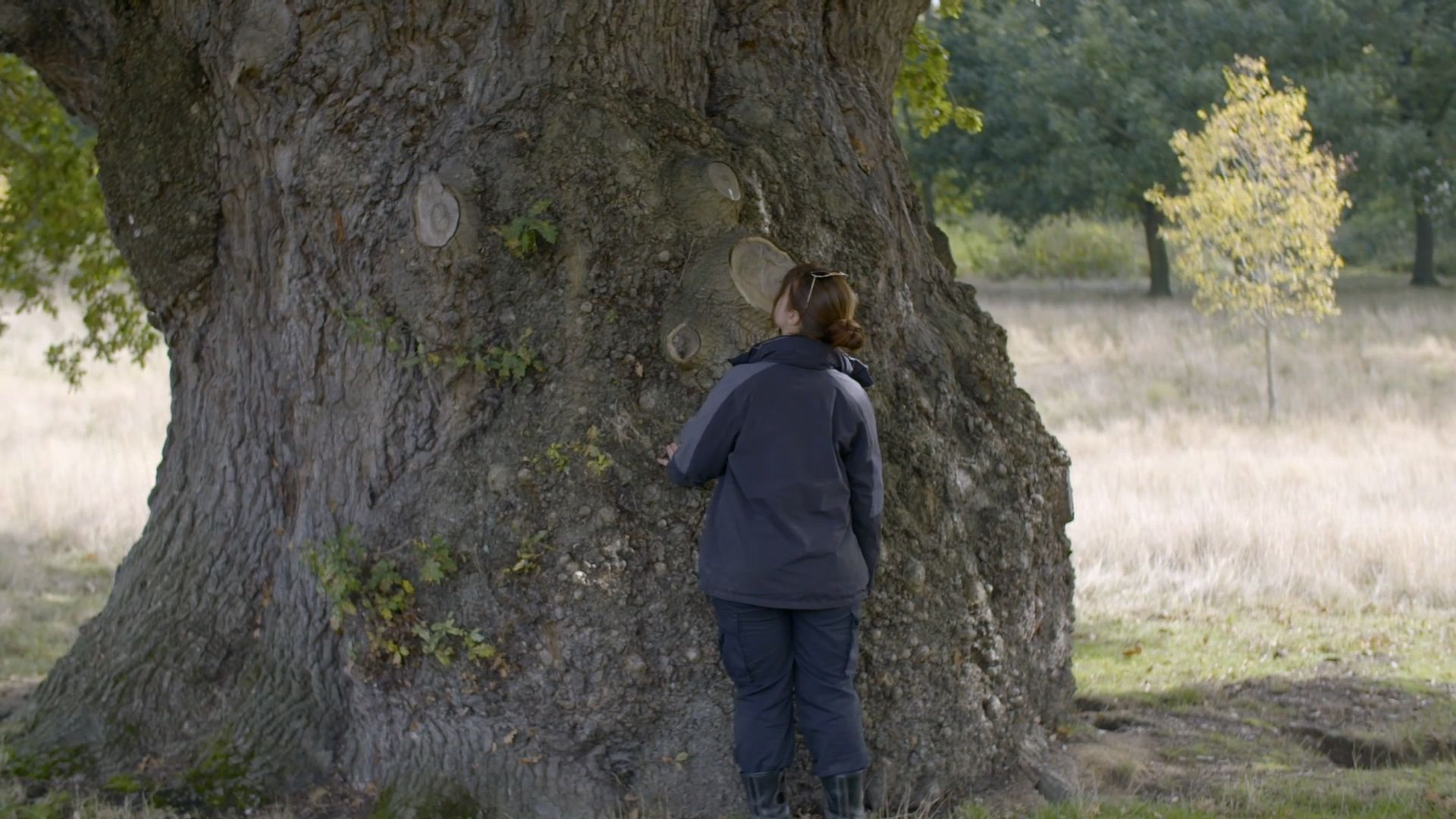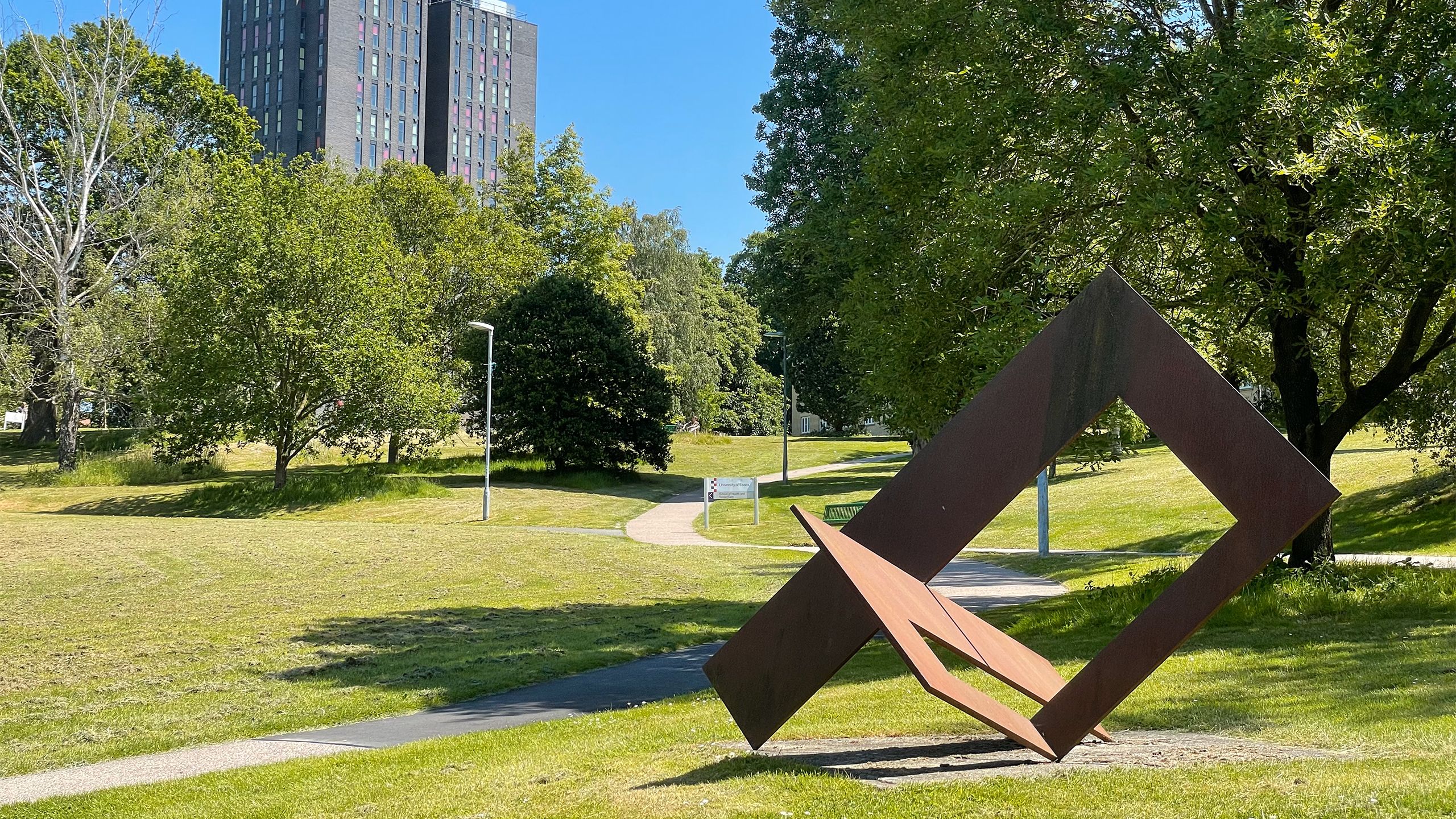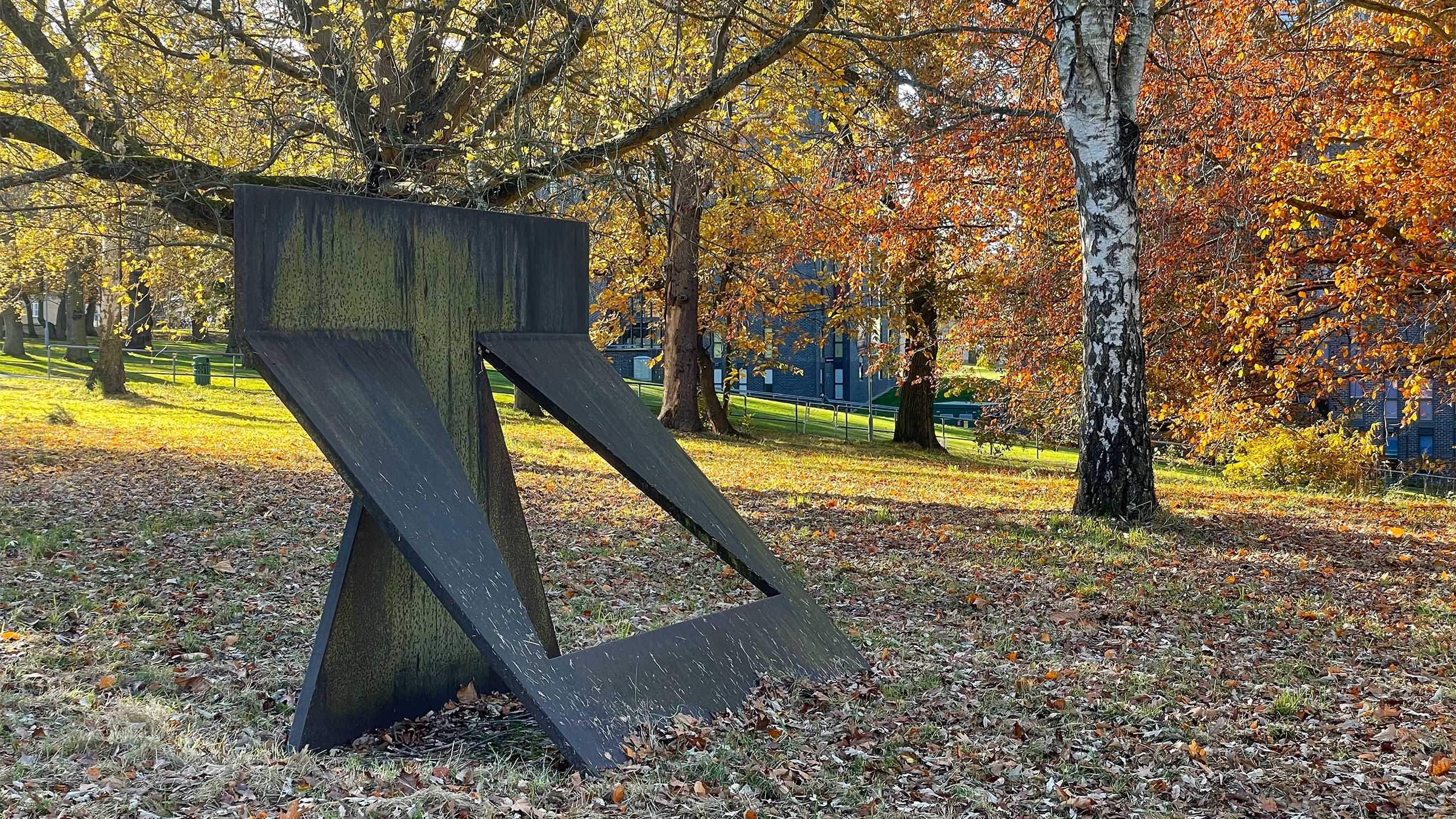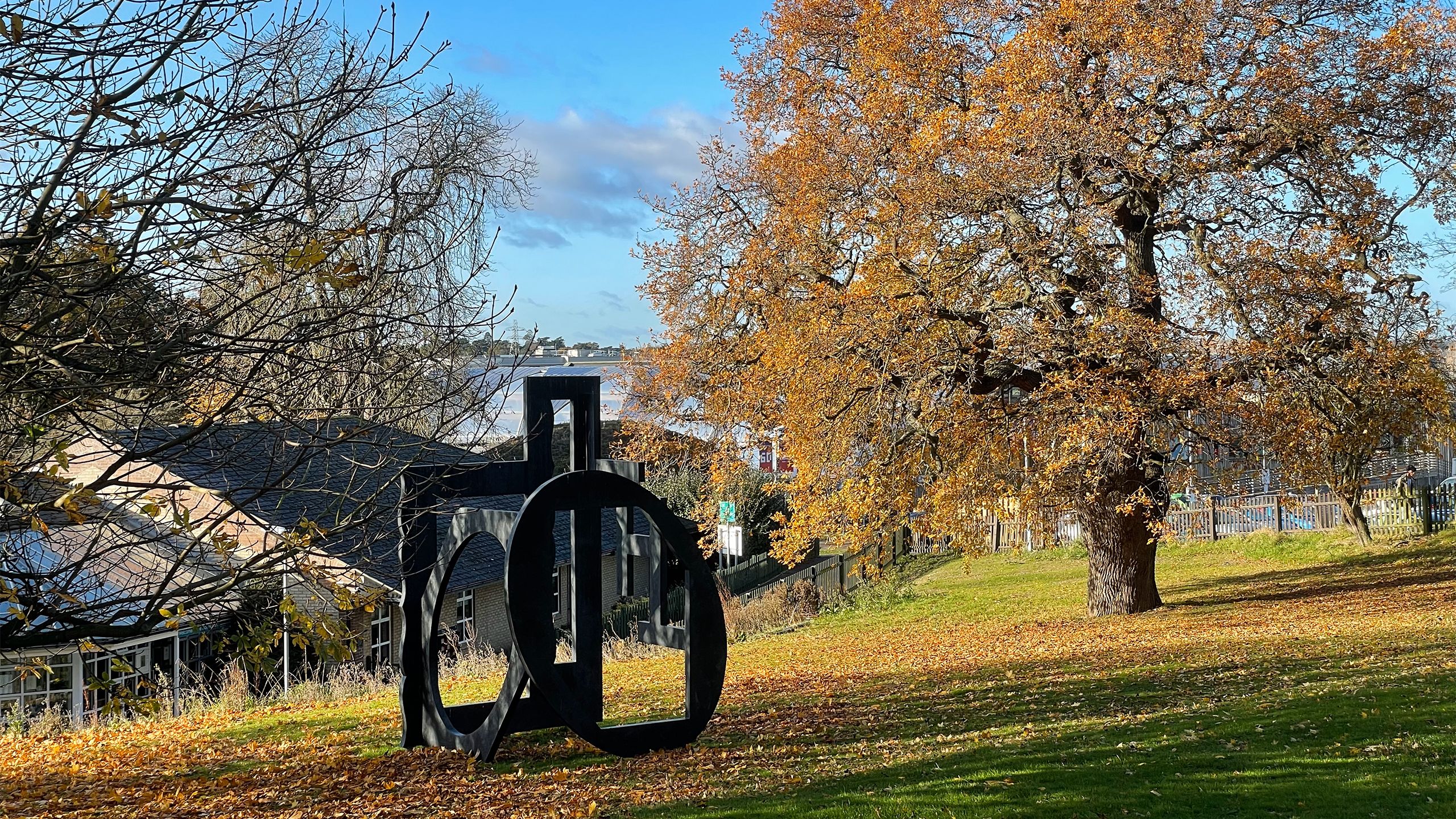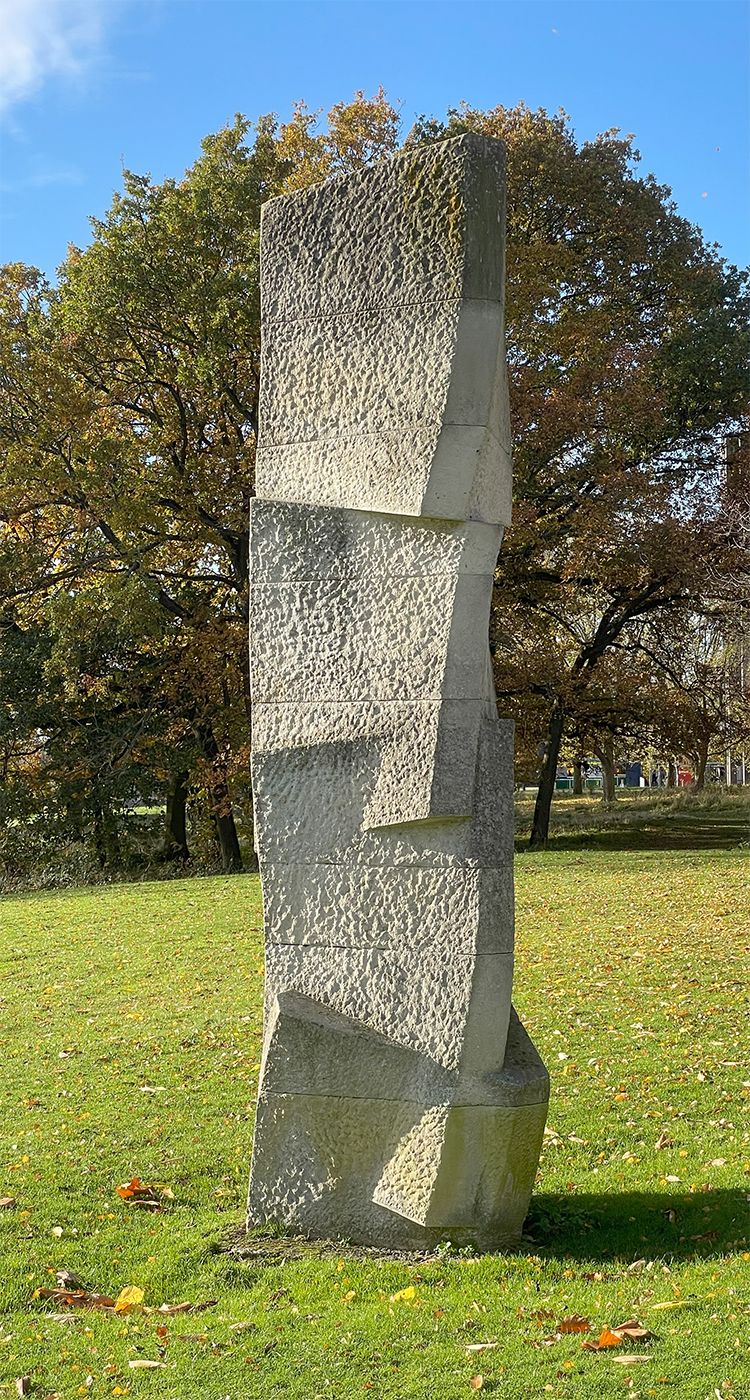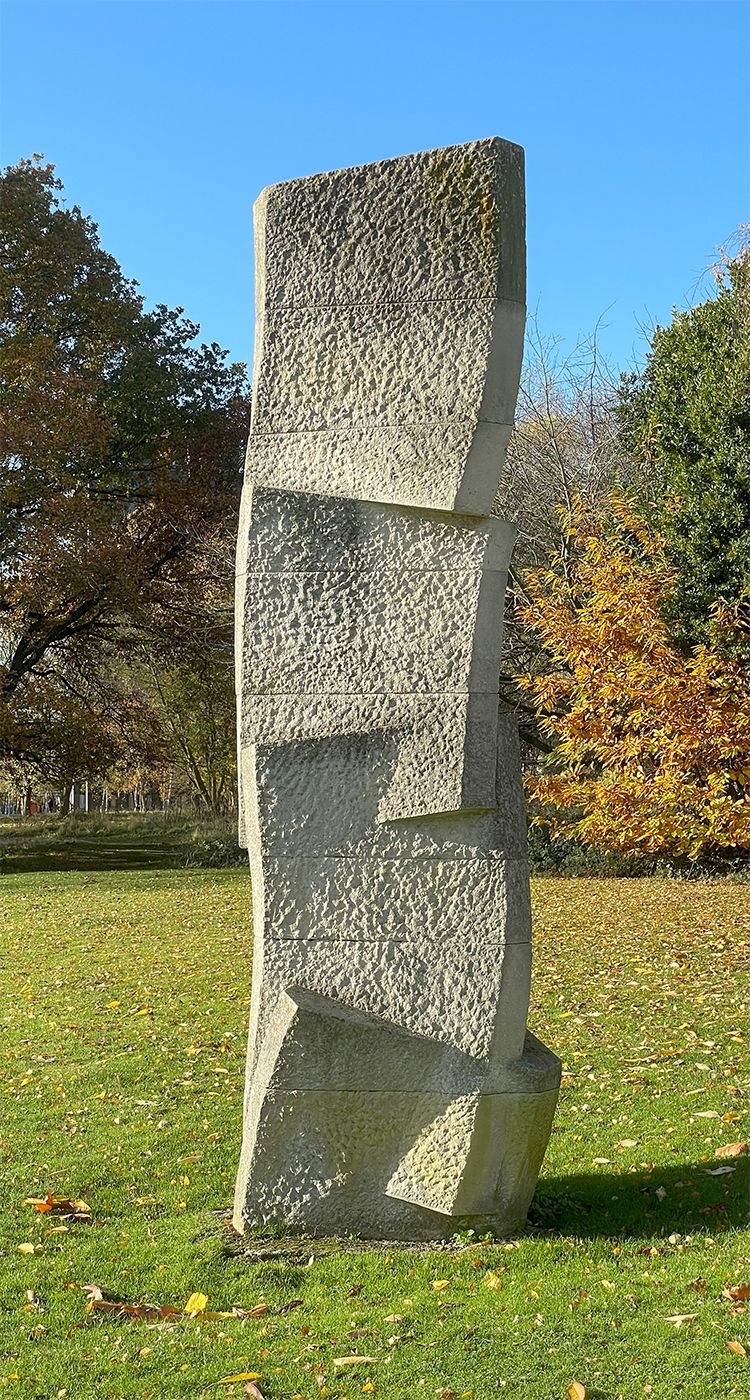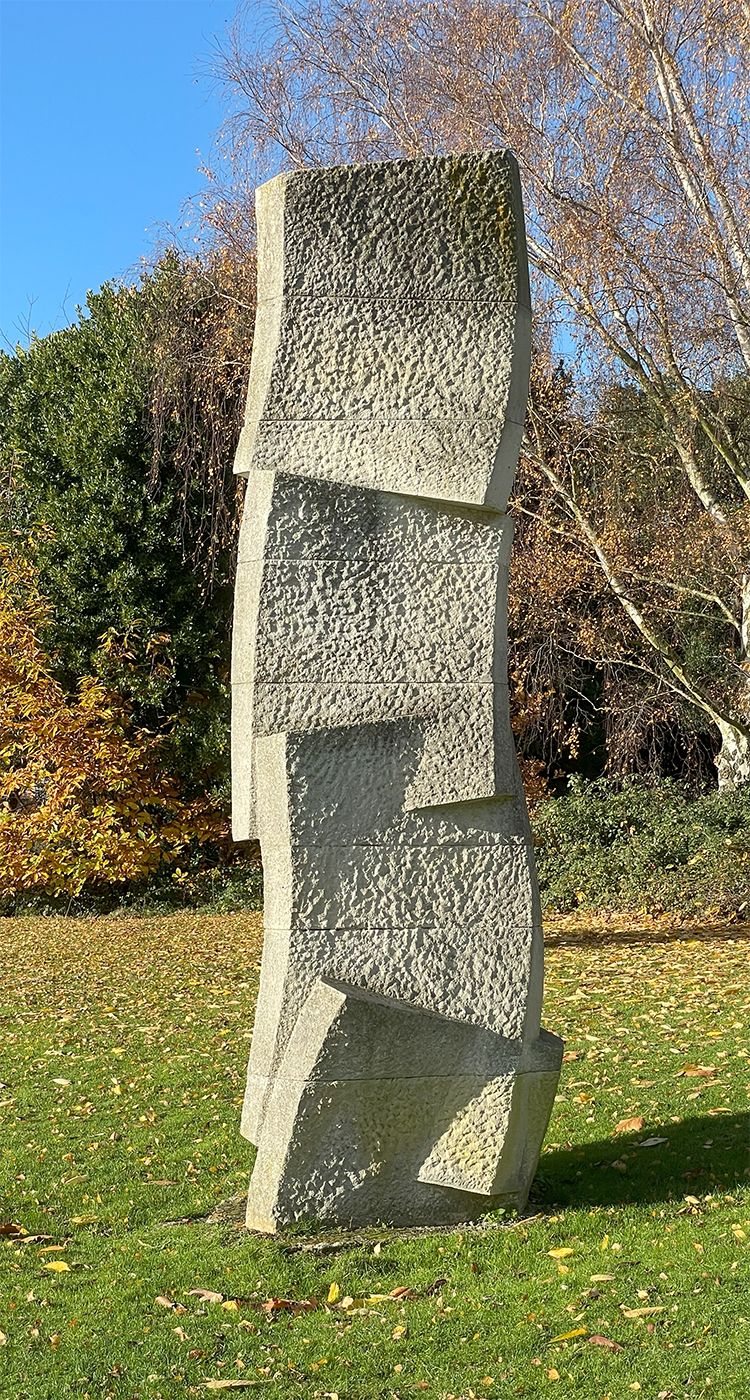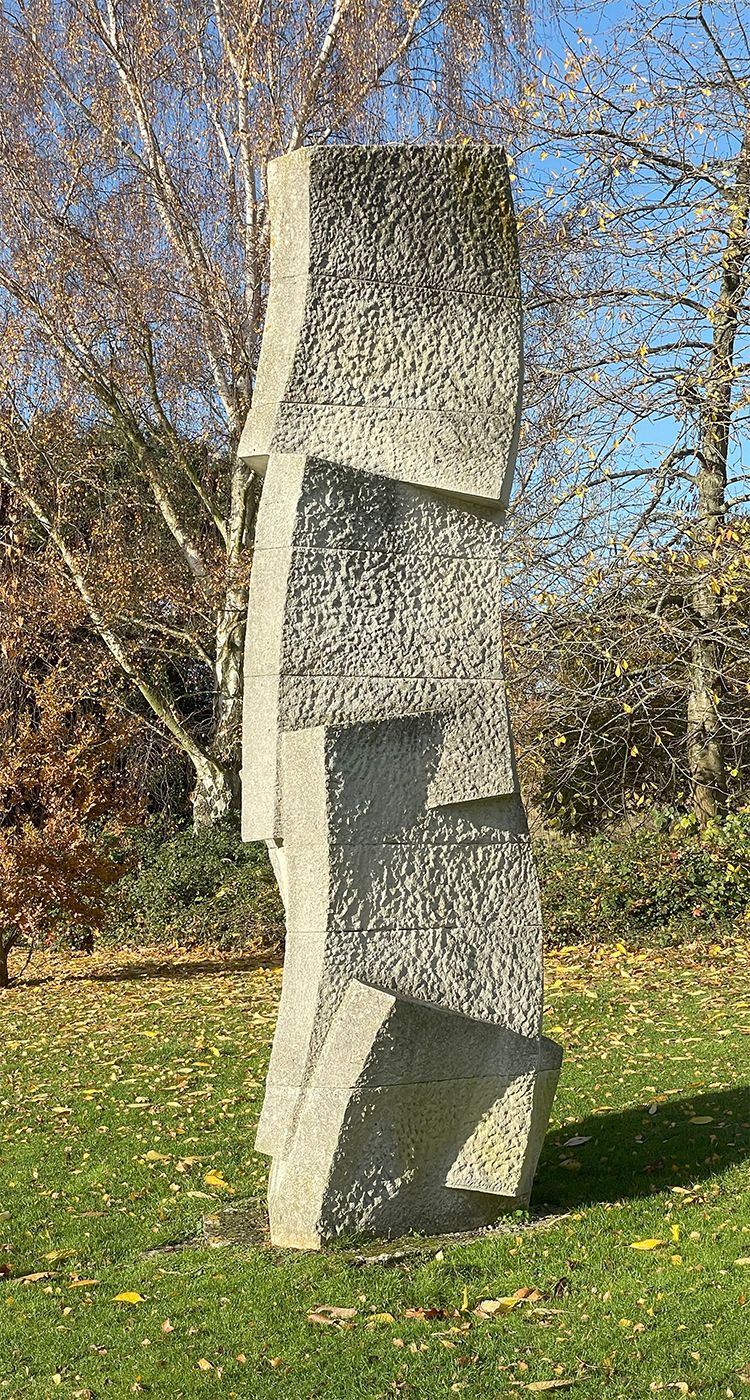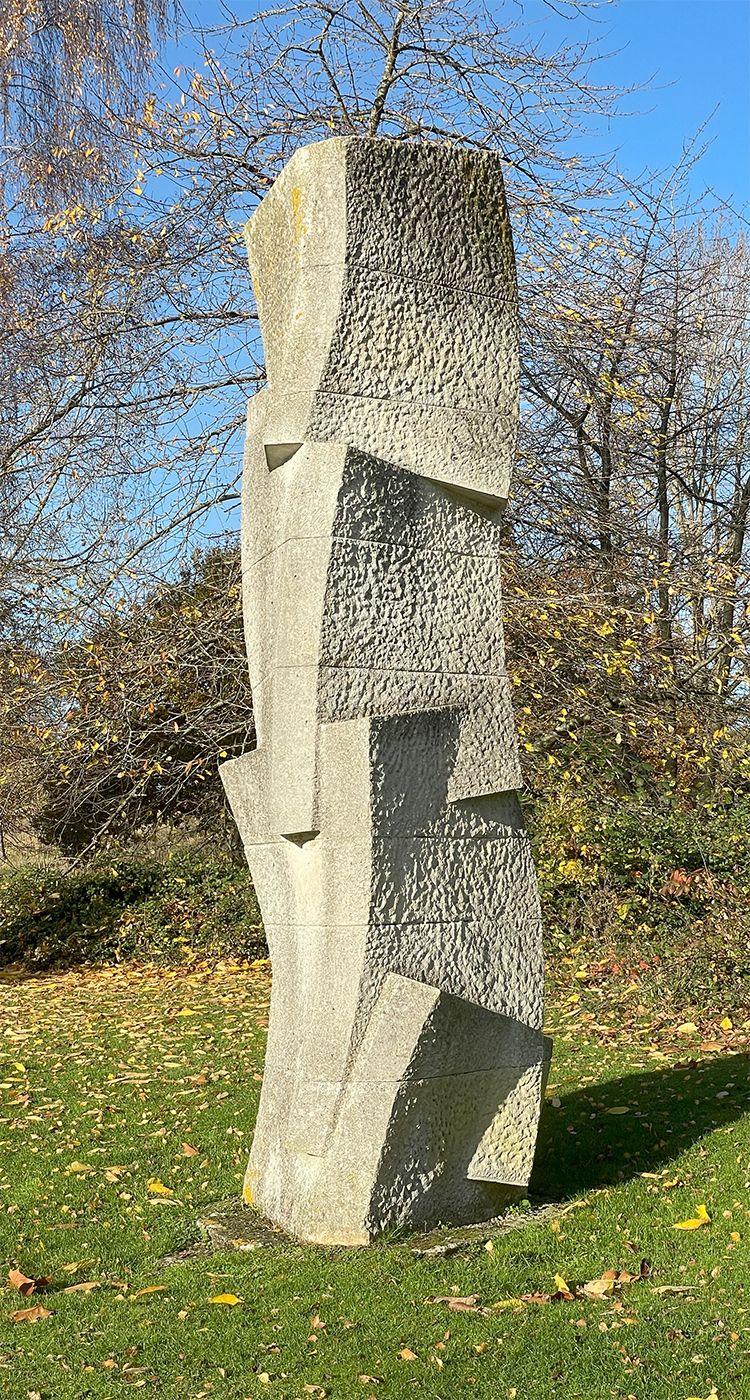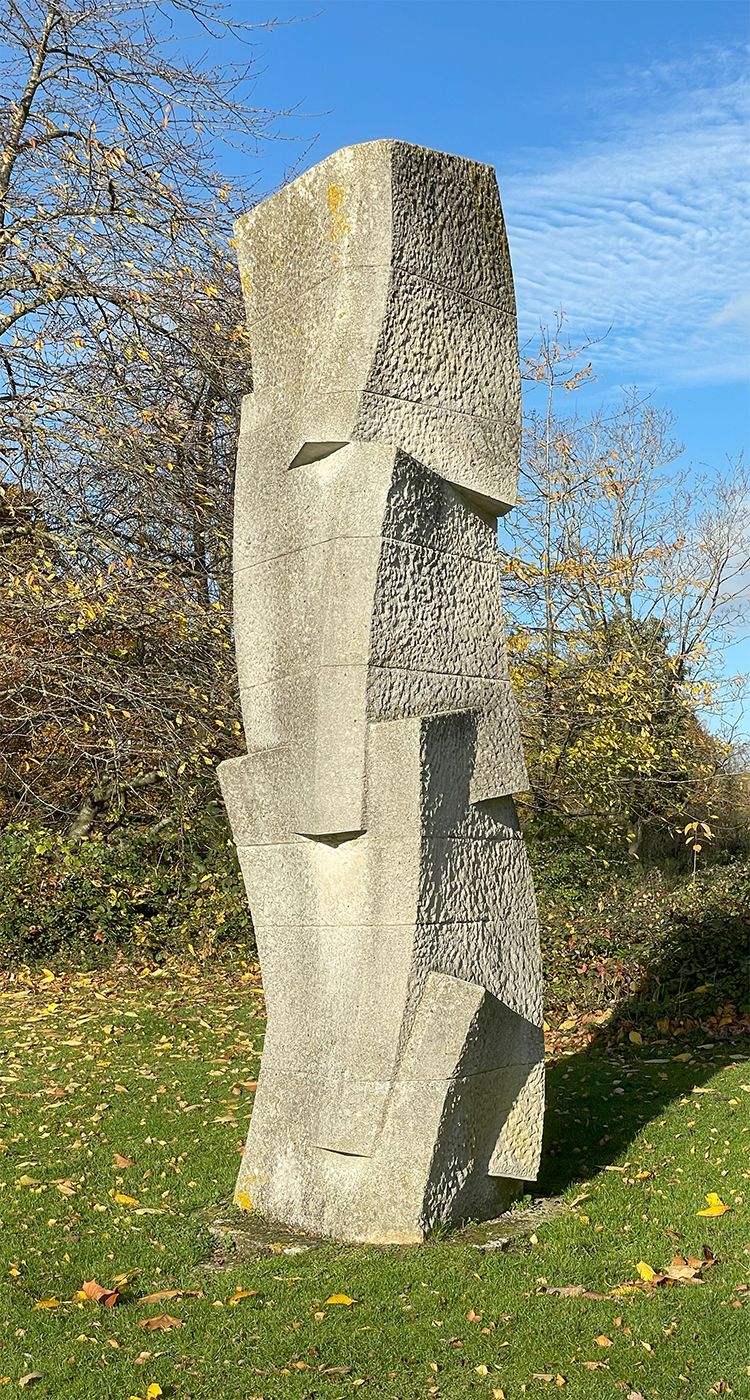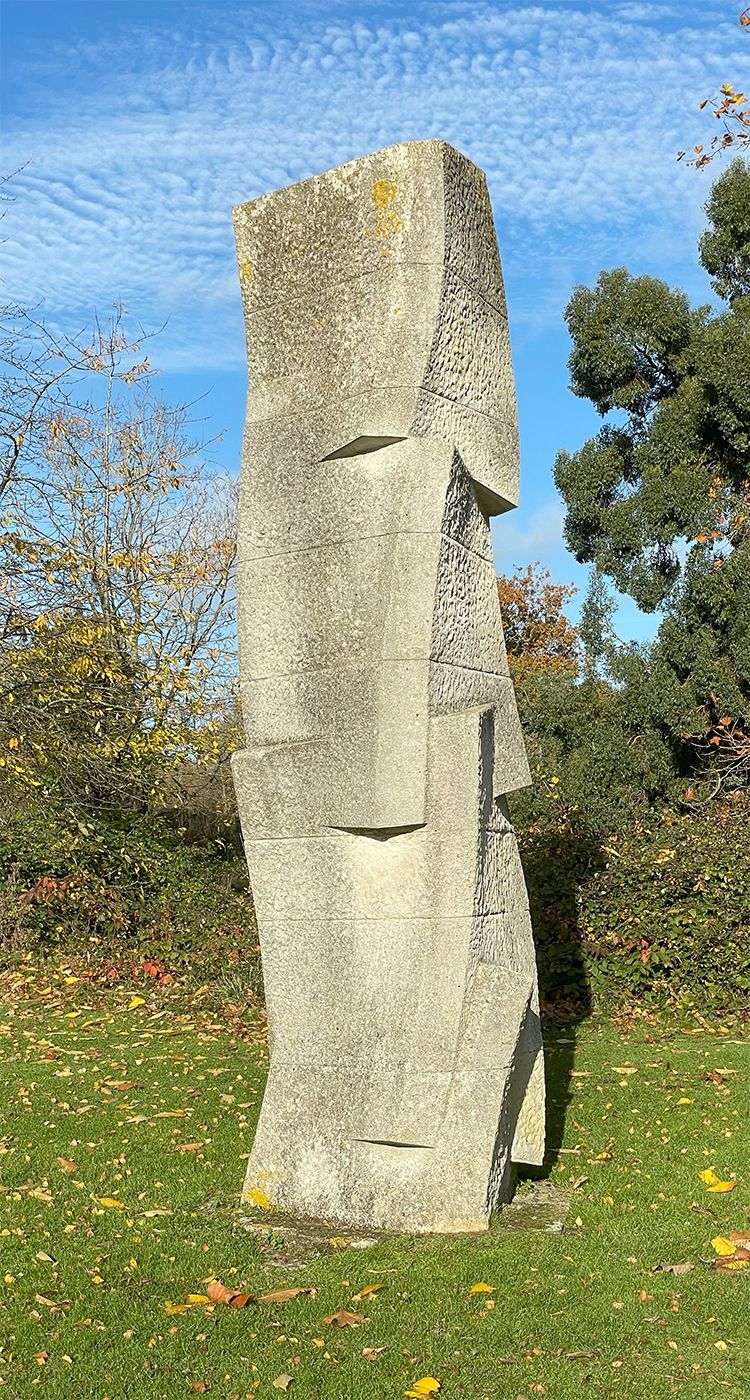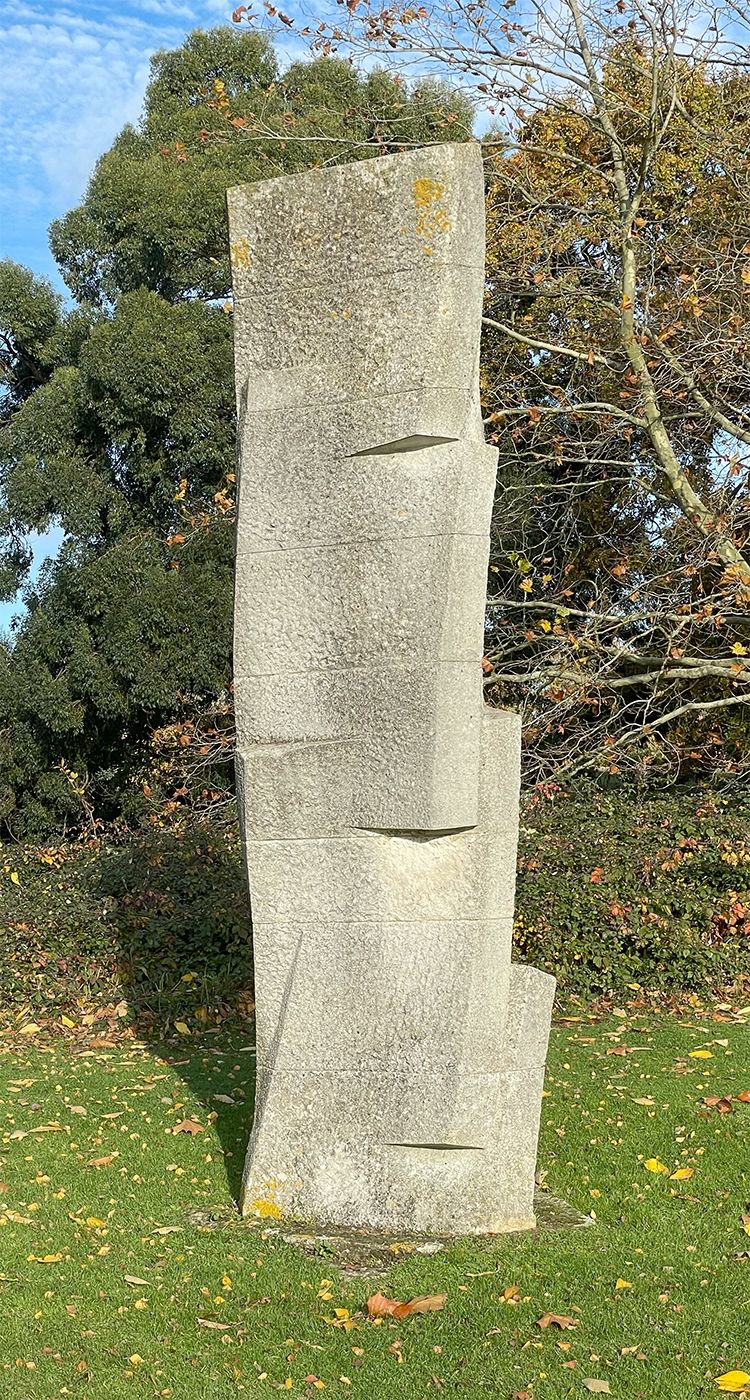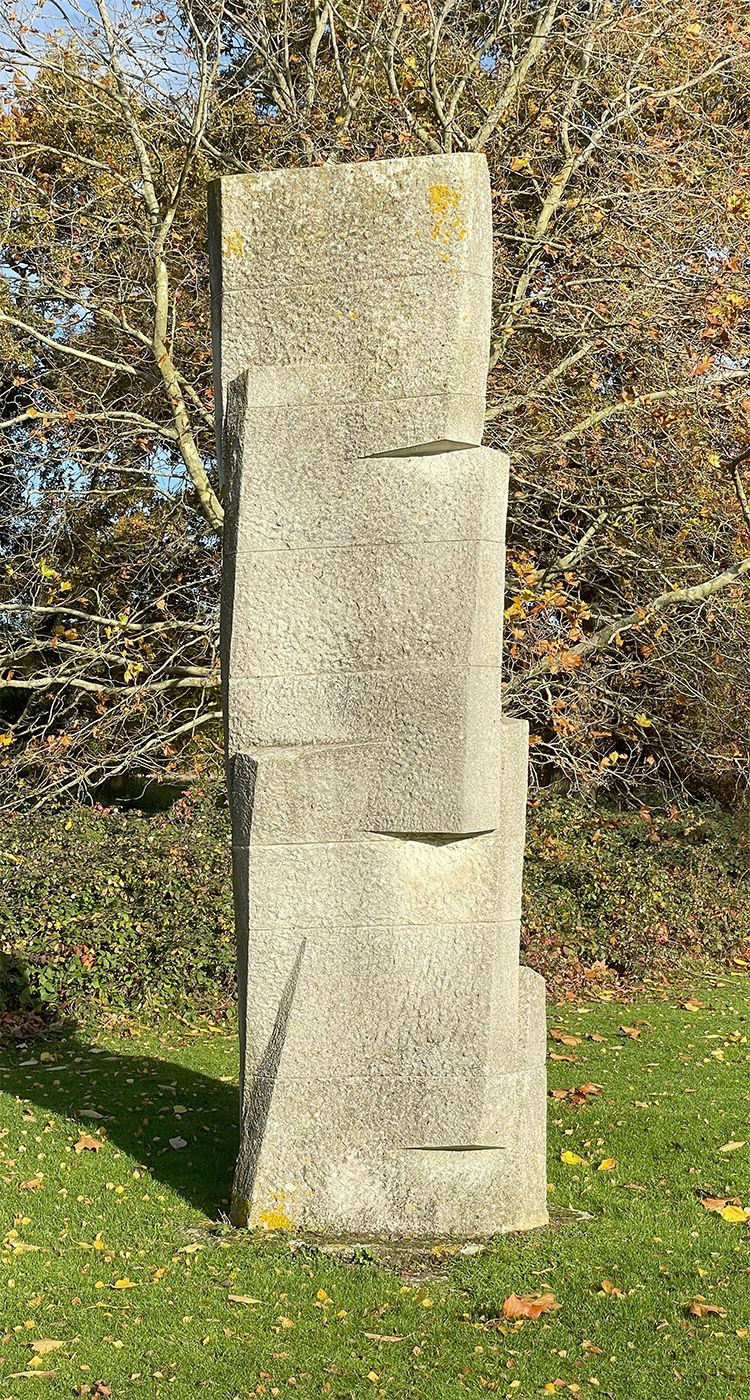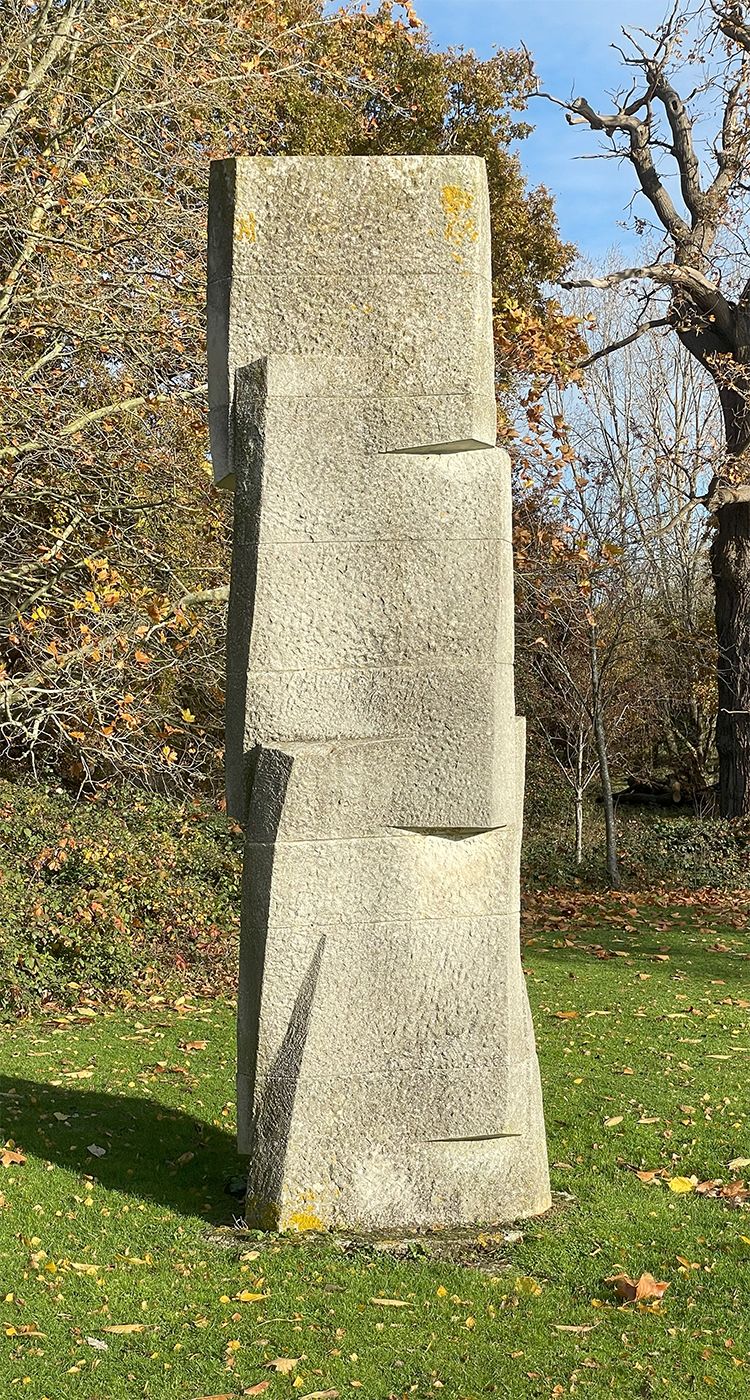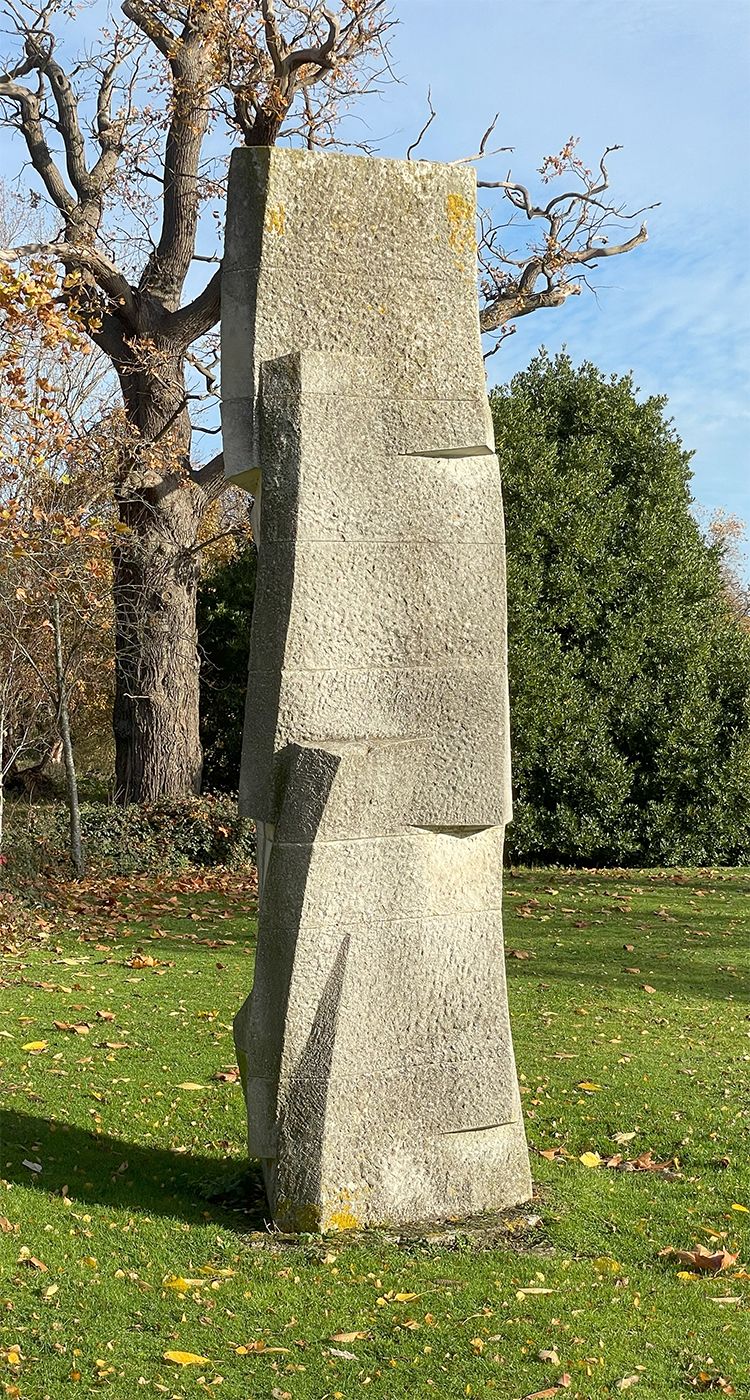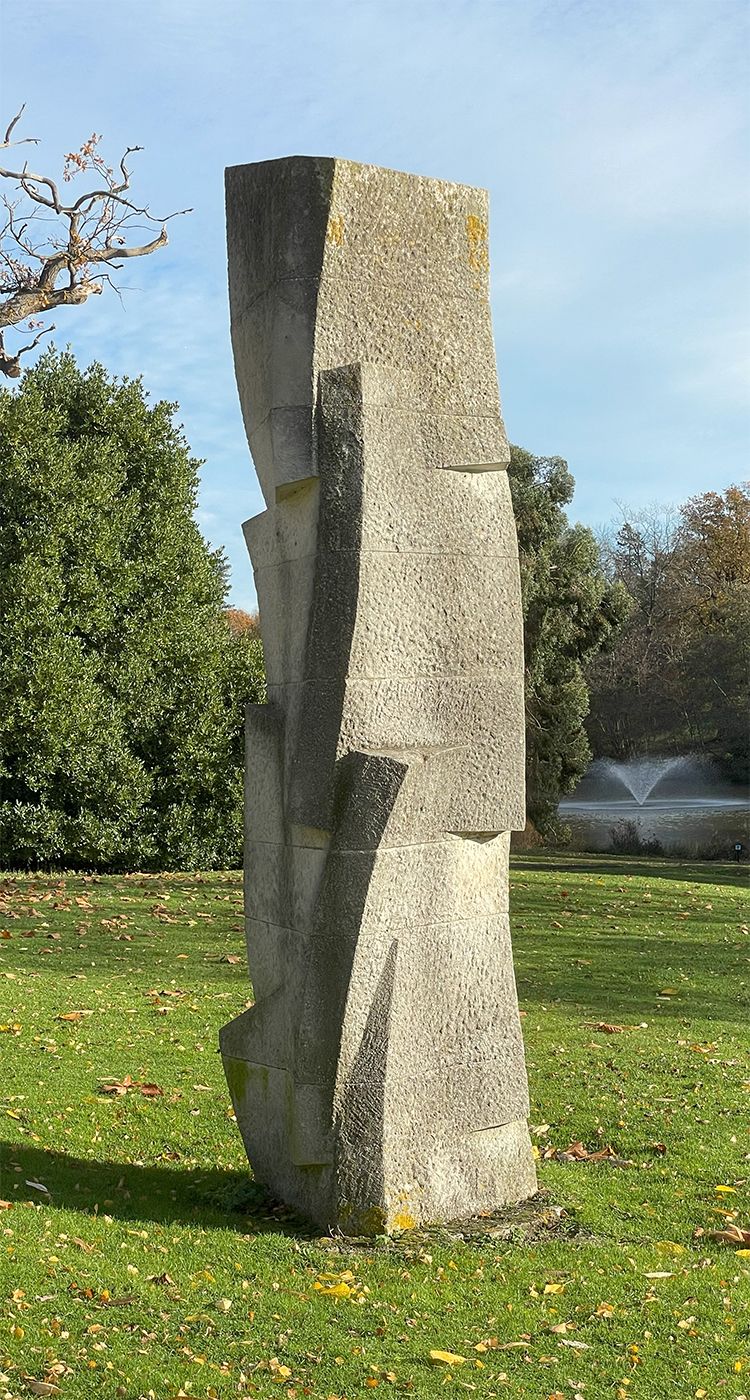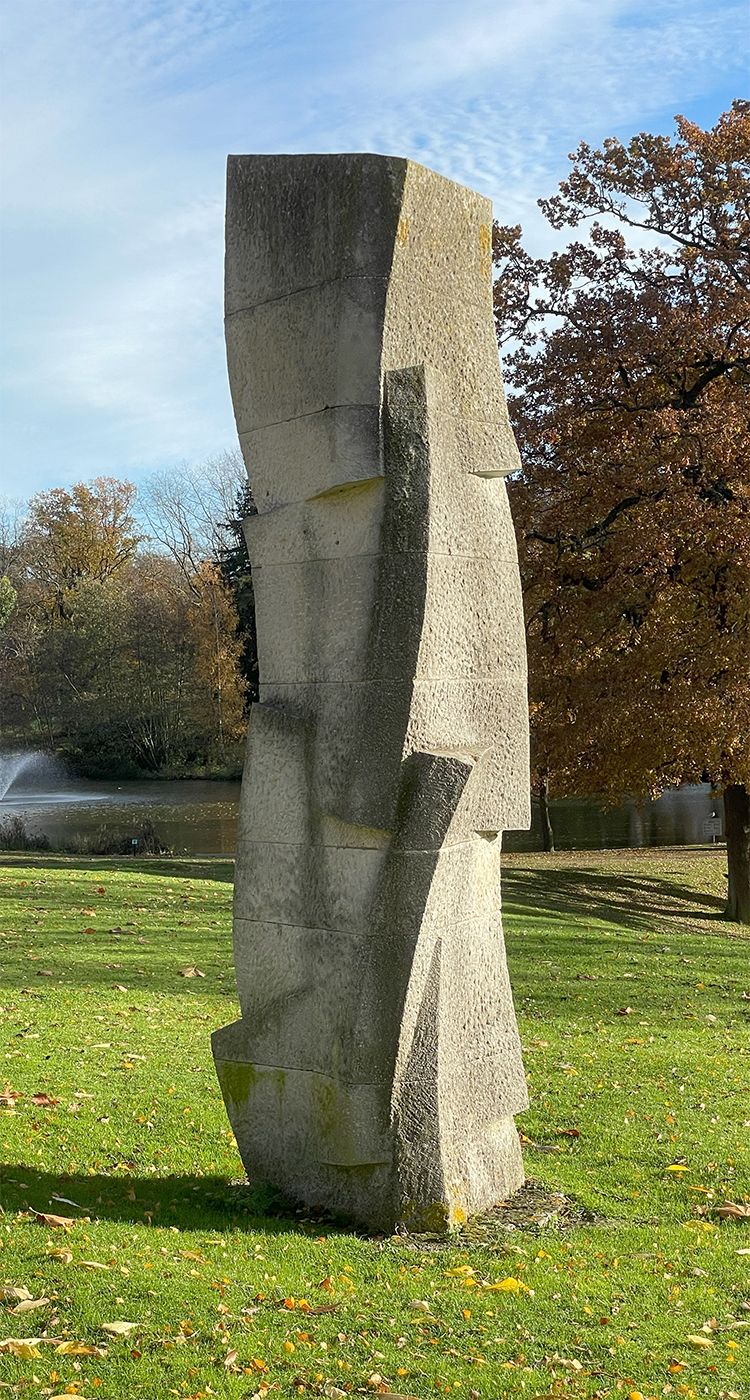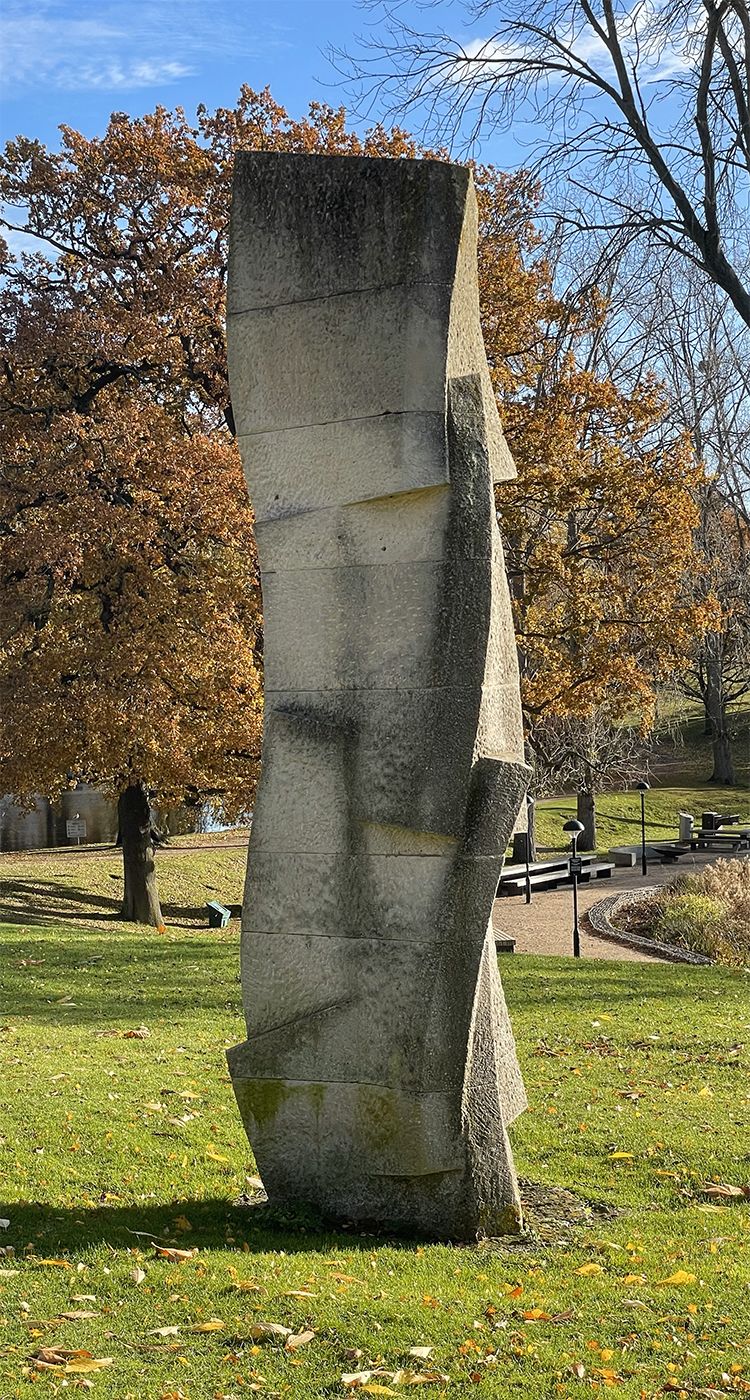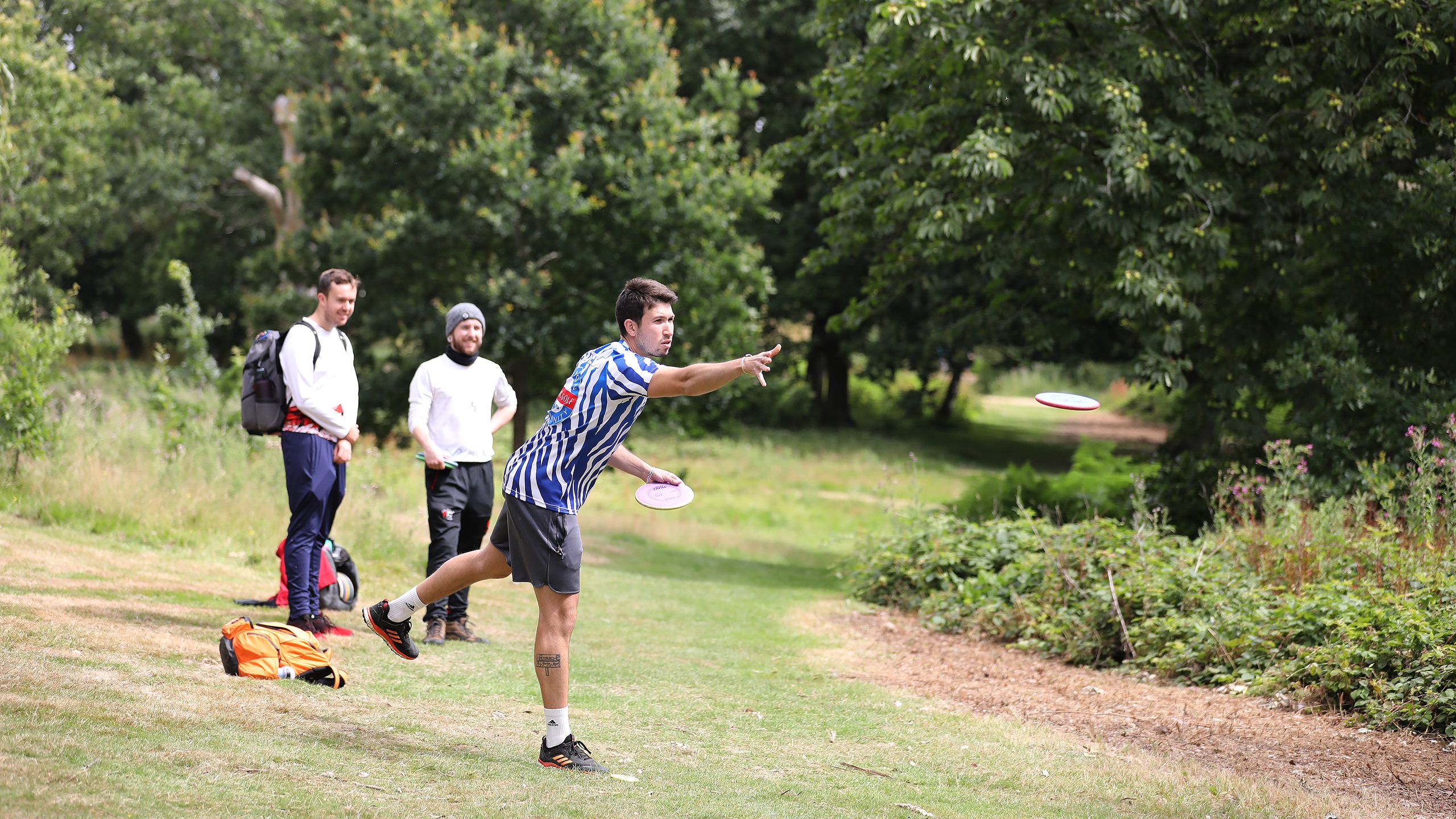Green space for all




For nearly 200 years, Wivenhoe Park was the private paradise of the Rebow family.
Then, in 1964, the University became its custodian.
Now a multi-award-winning green space, we’ve developed Wivenhoe Park into a destination for the whole community.
From Constable...
John Constable knew well the beauty of Wivenhoe Park. The legendary British artist reflected its peaceful landscape in his 1816 painting which today hangs in the National Gallery of Art in Washington DC.
The work was commissioned by the Rebow family who, since 1733, had transformed the medieval woodland that once grew across their estate. Constable’s painting depicts the development: grasslands cleared for cows and deer, Wivenhoe House constructed for the family, and the park’s well-loved lakes widened and bridged.
Wivenhoe House and its parkland look different today when compared with Constable’s painting. At the end of the 1800s, both were remodelled. Changes to the grounds were overseen by landscape architect William Andrews Nesfield, better known for his work at Kew Gardens.
Finally, in 1902, debt forced the Rebows to sell Wivenhoe Park to the Gooch family, ending an era which lasted nearly two centuries.

to concrete...
The army occupied the park during both World Wars, but the Gooch family made no further alterations after their purchase. The land was sold again in 1964, this time to the University of Essex. Construction of our Colchester Campus began the same year.
Wivenhoe Park contains a valley. It runs from the lakes down to the floodplains of the River Colne. To preserve the beauty of the landscape, architect Kenneth Capon’s concrete masterplan called for University buildings to be concentrated in this valley. Traverse the stepped layout of our five squares and you will feel how this was achieved.
But what of the towers standing over the land? Vice-Chancellor Albert Sloman’s founding vision for the University saw living and learning closely integrated. Our towers allow hundreds of students to live close to the academic heart of campus. However, they also avert a sprawl of accommodation buildings which could have engulfed our green spaces. As renowned brutalist architect Ernő Goldfinger put it:
“The whole object of building high is to free the ground for children and grown-ups to enjoy Mother Earth, and not to cover every inch with bricks and mortar.”
So, whether you live or work on campus, connection with nature is just a short walk away, and the 230 acres of historic parkland remain free for you to explore.

...to conservation
Today, Wivenhoe Park and its oldest buildings are protected by Grade II heritage listings.
The University’s Grounds team carefully preserves the parkland in the spirit of its original landscape architects while supporting the needs of the community in a flourishing, modern university.
We put sustainability at the heart of our grounds work, from organic fertilisers to biological composters, LED lighting to waste water recycling. In this way, we seek to conserve both our past and our future for all to enjoy.
Much of our conservation effort is dedicated to the 2,800 notable and historic trees growing throughout the park. To celebrate our rare species, we developed a free, self-guided tree walk that you can follow to discover strange strawberries, giant redwoods, and a 500-year-old oak:
It’s not just people who use the park. Across 18 major habitats, you will find a diverse range of flora and fauna. Visitors to our three man-made lakes include Canada geese and kingfishers — you can even spot sunbathing carp on warm summer days. In boxes and hives across campus, birds, bats, and bees make their homes. And we purposefully leave log piles and wildflower areas in peace to welcome insects and lizards, harvest mice and hedgehogs.
See the secret world of wildlife captured on camera by our Sustainability team:
Deer look for food, a bat takes flight, rabbits dig holes, and squirrels chase each other in day- and night-time footage.
Deer look for food, a bat takes flight, rabbits dig holes, and squirrels chase each other in day- and night-time footage.

Together, the outstanding efforts of our Grounds team have earned Wivenhoe Park the prestigious Green Flag Award every year from 2017 to 2023.
Over the years, judges have commented that:
- ‘biodiversity, landscape, and heritage are both maintained and enhanced’, for which Essex is ‘well-known and respected’
- the park is ‘one of the best sites I have seen for environmental practices’
- ‘the health and wellbeing that the natural environment brings to students is evident and priceless’
- ‘Wivenhoe Park is a vital green space for the community in Colchester, bringing people together and providing opportunities to lead healthy lifestyles’
- ‘it must be at the top of any university landscapes’
And the community agrees: in public votes every year since 2018, our Colchester Campus has been ranked as one of the top ten green spaces in the UK — the only university campus to receive the People’s Choice Award.
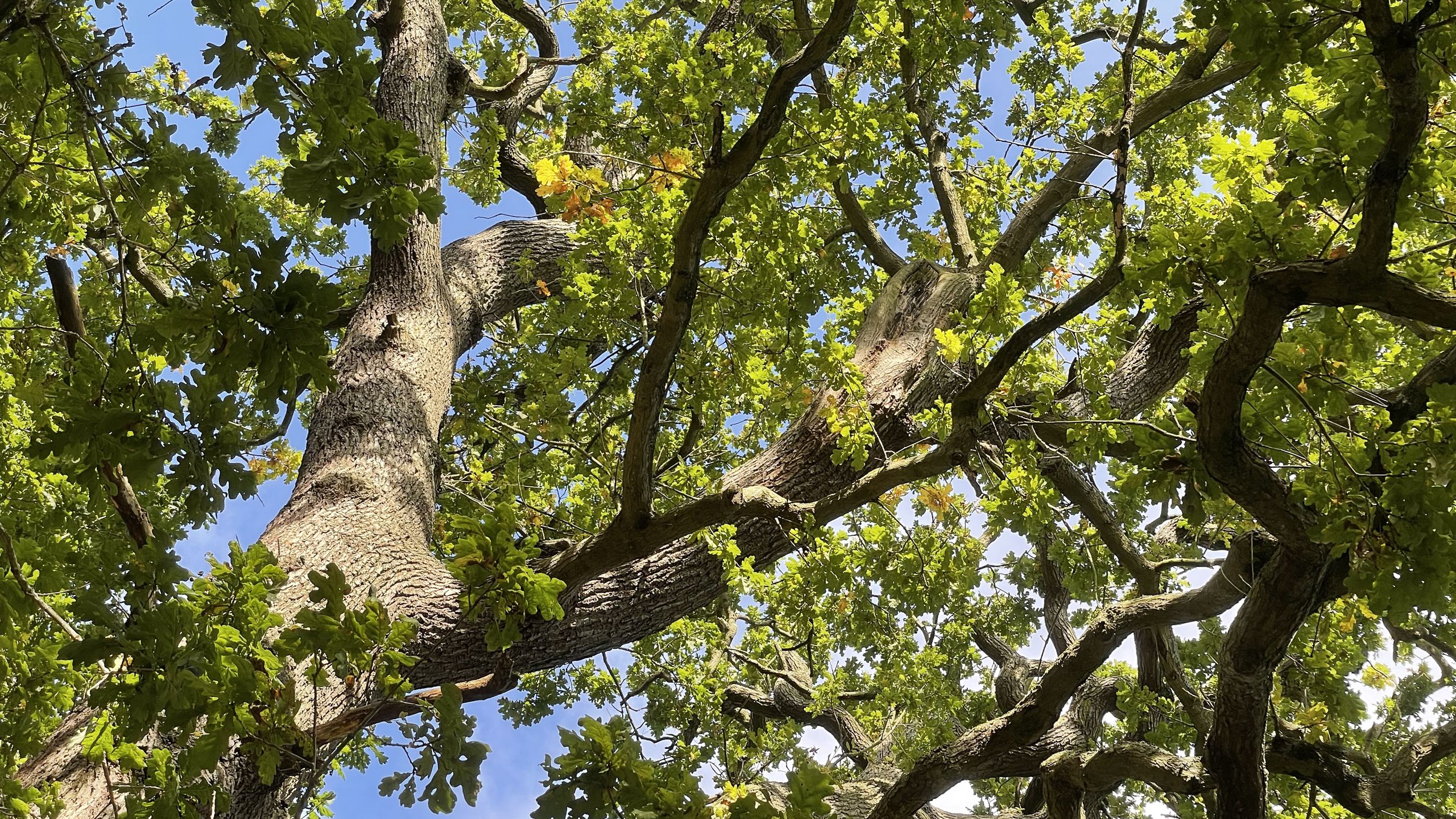
Parklife
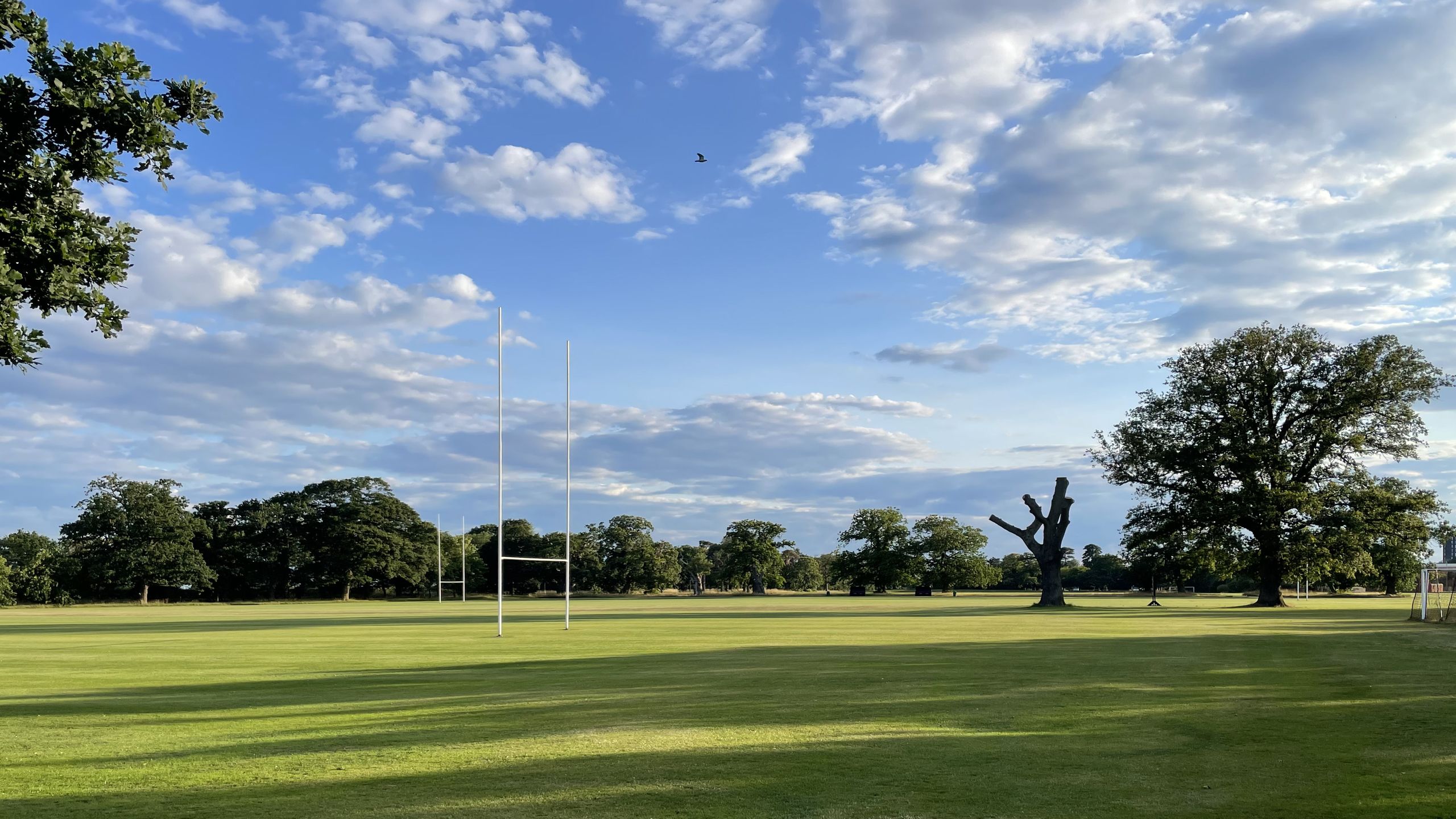
Wivenhoe Park is open to everyone from the University, the local area, and further afield.
Historic and free, its lakeside walkways and quiet glades are an ideal setting in which to meet people, to exercise, and to take a breather from the busyness of daily life.
At any time, you can immerse yourself in the tranquil sights and sounds of the park with our slow TV:
In this setting, it’s little wonder that the green exercise revolution was born at Essex. For students, the park contains 40 acres of sports pitches, tennis courts, and even an allotment where they can break a sweat.
Then there’s our world-class course for disc golf.
For what? For disc golf! Imagine the best bits of frisbee and golf combined. It is said that, years ago, the University wanted a sport which matched Essex values. Disc golf proved accessible to everyone; not gender-segregated; non-contact; easy to play for fun or competitively; and, self-officiated by players, a truly democratic sport.
Ours is the oldest course in the UK and it has been revitalised as the Diamond Jubilee Course to mark the University’s 60th anniversary. Its signature holes include one through a tunnel of trees, another with an epic throw across a lake. Still aligned with our values, though, you can choose easier routes with tips for each one, and the course is open to all.
Art in the park
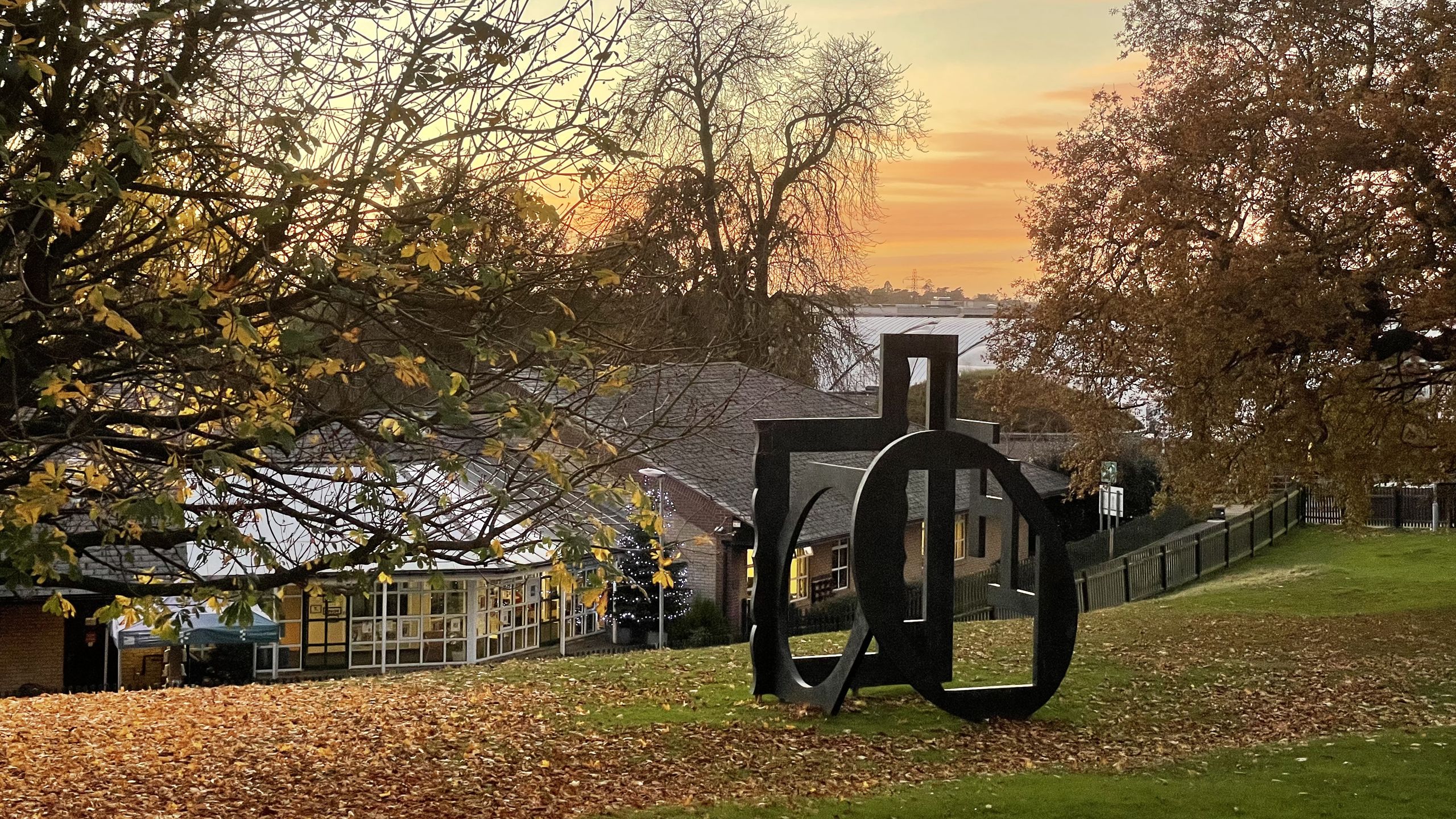
Wivenhoe Park is an inspiring place — and not just for its nature.
Dotted throughout, you will find arresting artworks collected and commissioned by the University over decades.
These sculptures at once reflect and contrast their surroundings in ways that may surprise anyone who takes the time to explore this green gallery.
Standing Stone
Standing Stone (pictured) is based on the geometry of movement. As you walk around its rotating triangular form, one side catches the light while another is forced into shadow. The resulting spiral implies a continuous motion which originates below the level of the ground and continues into the air, suggestive of the organic forces which have bent and twisted the forms of nearby oak trees over the course of time.
Standing Stone was commissioned by the University in 1987. Both students and staff took part in discussions with John Maine, who went on to make significant alterations to the location and form of the sculpture seen today.
Spinney
Vertical, angular blades of galvanised steel cluster together in a raised bed, echoing the forms of a natural spinney — a small wood or thicket. Through his sculptures, Robert Scott Simon attempts to extract the essence of natural forms and freeze them in time. He encourages us to look again at nature by creating a space in which we can contemplate a particular moment in the ever-changing cycle of growth, inevitable decay, and growth again.
Spinney was kindly left to the University in a will.
Untitled
This monumental wooden sculpture by Brazilian artist Elisa Bracher comprises two whole tree trunks of a wood known in Portuguese as ‘angelim’. Bracher saws the bark off the trees to create faceted columns, which she then joins with dovetails and large metal bolts. Evidence of the artist’s hand is minimal, however, and these immense sculptures have the appearance of industrial forms rather than crafted ones. Different from every angle, the viewer is encouraged to move around this sculpture in order to appreciate it in its entirety.
This work was donated to the University by Elisa Bracher and São Paulo’s Galeria Marília Razuk in 2000.
Fita decrescente no espaço
Fita decrescente no espaço translates from Portuguese as ‘ribbon descending from space’ and is one of a number of fitas, or ribbons, that Brazilian sculptor Franz Weissmann made in the 1990s. In all of these sculptures, the ribbon is a flat, straight piece of iron that has been twisted as though it were a strip of paper or cloth until it almost curves. As a ‘constructivist’ sculpture, made from industrial materials, Fita decrescente no espaço bridges the gap between the everyday and art. The delicate appearance of this sculpture, however, belies the fact that it weighs 650 kilogrammes.
Weissmann donated this piece to Essex in 1996.
Untitled
Amílcar de Castro, who died in 2002, was another of Brazil’s foremost sculptors. In 1959, he signed the Neoconcrete Manifesto with Franz Weissmann and other artists who believed in creating geometric, abstract art that, nevertheless, was not completely lacking in human warmth. This iron sculpture takes a semi-pyramidal form, with a cut-out triangular section inclined against a square frame. Unlike Amílcar’s earlier iron sculptures that were welded, this example comprises a piece of metal that has been cut and folded and is also extremely heavy, weighing 2.3 tonnes.
This work was donated by the artist in 1996.
Views of the Interior
While in South Korea working on a sculpture for the Seoul Olympics in 1988, Nigel Hall visited the old Changdeokgung Palace and discovered a large ornamental pool. This pool, and all its reflections, made a lasting impression on the artist and led him to create a series of sculptures, of which Views of the Interior is the largest. Now, views of the park, the towers, and people walking by are all contained for a moment as you walk in and around this compelling sculpture.
This sculpture was donated to the University by BP.
Find out more
Try your hand at disc golf
Our world-class Diamond Jubilee course is open to everyone seven days a week. See opening times and how to play.
Explore Wivenhoe Park and its trees
Wander through our award-winning parkland and discover 40 historic and unusual trees along the way.
Sixty Stories
We’re celebrating 60 years of making change happen. 60 years of boldness and bravery from our students past and present. 60 years of creating change.

